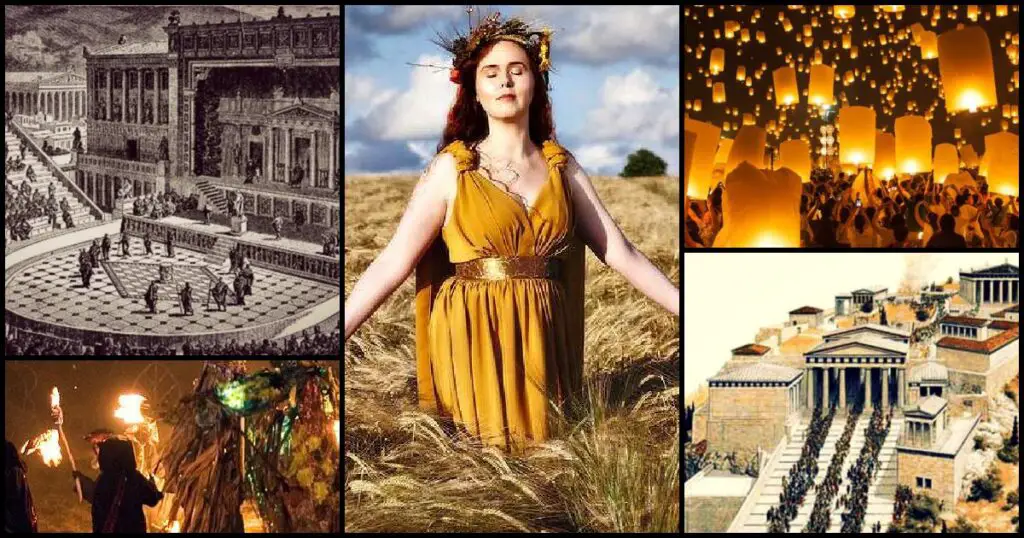
All over the world, ancient cultures celebrated different festivals. Some festivals were associated with the seasons, while others were associated with different gods and goddesses. Some festivals included offerings to the gods and some offerings included human sacrifice. This list comprises some of the different festivals from around the world
Greek Festivals
Dionysia Festival
Symbol of gluttony, celebration, fertility, and dramatic arts.
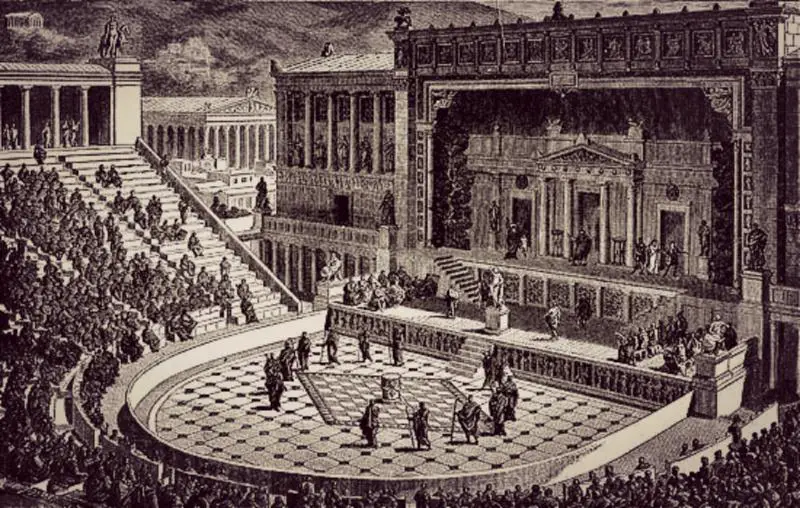
The Dionysia festival was originally held in Attica, a rural section of Ancient Greece. Throughout the towns in Attica, these Dionysus festivals would take place in winter. They were considered the festival of the vine, but not yet associated with the Greek god Dionysus. There was a procession called the pompe led by people carrying phallio they were followed by people bearing baskets, loaves of bread, jars of water, and wine amongst other offerings. After the pompe, there would be singing and dancing contests. Some of these festivals also had dramas and comedies performed.
The City Dionysia was held in more urban areas. It was called the Grand Dionysia and it was held in the spring. Everyone taking part in the Grand Dionysia would march to the Theater of Dionysus in Athens. There would be a similar pompe as the Rural Dionysia but on a grander scale. In later years there would be weapons and spears carried in the pompe to celebrate the military might of Athens. After the procession, there was a competition for the best flute player and poet. During the competition, a bull was sacrificed and everyone was fed. Later in the day, a drunken revelry commenced in the streets of Athens. The next day a completion among the playwrights began. There were five days of plays alternating between comedies and tragedies. On the last day, the winners received an ivy wreath and there was a final procession.
Once the festivals started occurring in the city, all of the festivals became associated with the god Dionysus. He was the god of wine, celebration, and fertility.
Panathenaea Festival
Symbol of civic pride, power, strength.
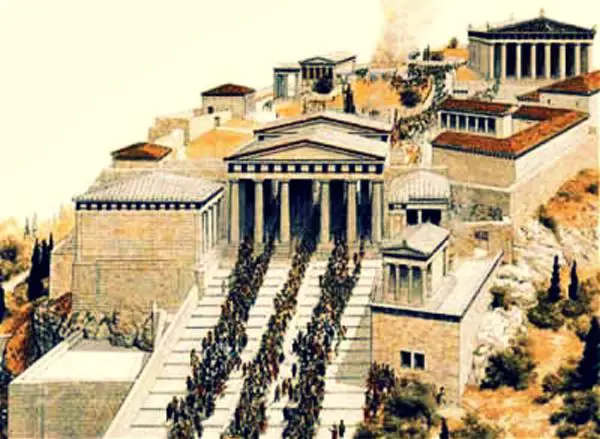
The Panathenaea Festival was held in Athens in honour of Athena, the protector goddess of Athens. The festival was held in mid-August near the time of Athena’s birthday. There was a lesser Panathenaea held every year and a great Panathenaea held every four years. Everyone except for slaves was allowed to attend the festival. The greater Panathenaea was a large spectacle with people arriving from all over. Chariot races were held during the Panathenaea. Equestrians and gymnasts also competed during the Panathenaea, Musicians sang songs, and parts of epic poems were performed. After the competitions, there was a spectacular procession. As a part of each festival, a new robe was woven and presented to the goddess Athena. The robe was hung on the mast of a full-sized ship which was then carried through town. There was a grand procession that consisted of athletes who had won the competitions and people bearing gifts for the goddess. The large procession ended at the temple of Athena where priestesses would put the robe on the statue of Athena. The festival itself lasted for five to seven days. The competitions that occurred during the festival were an homage to Athena, the goddess of war. Only the winners, and best soldiers, would be able to march in the procession. The festival symbolized the greatness of the city of Athens and showed everyone how powerful their citizens were.
Roman Festivals
Saturnalia Festival
Symbol of bounty, happiness, feasts, joy, fertilization.
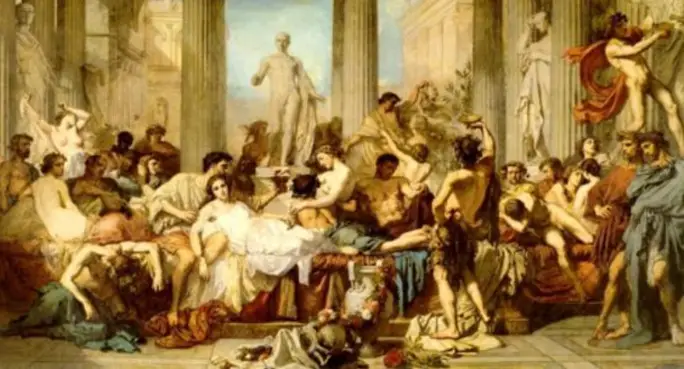
The Saturnalia festival occurred in December over an eight-day period. During this time, slaves and freemen could walk among everyone else. People decorated their houses with green wreaths and wore nicer flashy clothes. Wax candles were given as gifts during this time. There was no labor during the festival and gambling tables were set up. Gambling was normally frowned upon, but during Saturnalia, everything was turned upside down. There was a mock King in every house – decided upon by putting a coin in a cake. Whoever got the coin was the king during Saturnalia, and everyone celebrated with large feasts despite their class. Masters would wait on slaves. In the temple of Saturn, the statue of Saturn usually had wool binding its feet. During Saturnalia, the woolen binds were taken off as a show of freedom for all.
The god Saturn reigned over people during a time of peace and prosperity. No one had to labour and everything was granted to everyone. The Saturnalia reflected this time. Saturnalia was also a Festival of Lights. Many candles were lit before the winter solstice commenced. Saturn was the god of sowing and this festival took place after the seeds had been sown. When the festival first occurred there were human sacrifices to Saturn. Later, small terra cotta figures were given as gifts to remember the human sacrifices. Many rites and ideas around Christmas can be traced back to this festival.
Parilia Festival
Symbol of sacrifice, protection.
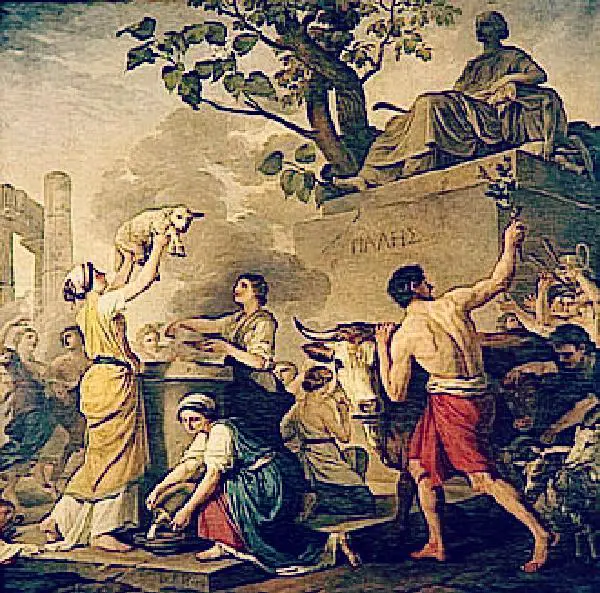
The Parilia festival was held on April 21. This was a rural festival that predated the founding of Rome. This was a festival of purification beginning with shepherds sweeping out their sheep pen and building a bonfire of laurel, sulfur, olive branches, and straw. While dragging his sheep behind, the shepherd would jump over the fire, thus cleansing them. The shepherd then presented offerings including milk, cakes, and millet to the god Pales, protector of herds and flocks, and then prayed for the safety of his sheep. The ceremony ended after the shepherd drank a combination of wine and milk and jumped over the fire three more times.
Later the festival was associated with the founding of Rome and many celebrations occurred, including dancing in the streets and singing. This festival was one of the precursors of Easter.
Lupercalia Festival
Symbol of sex, fertility.
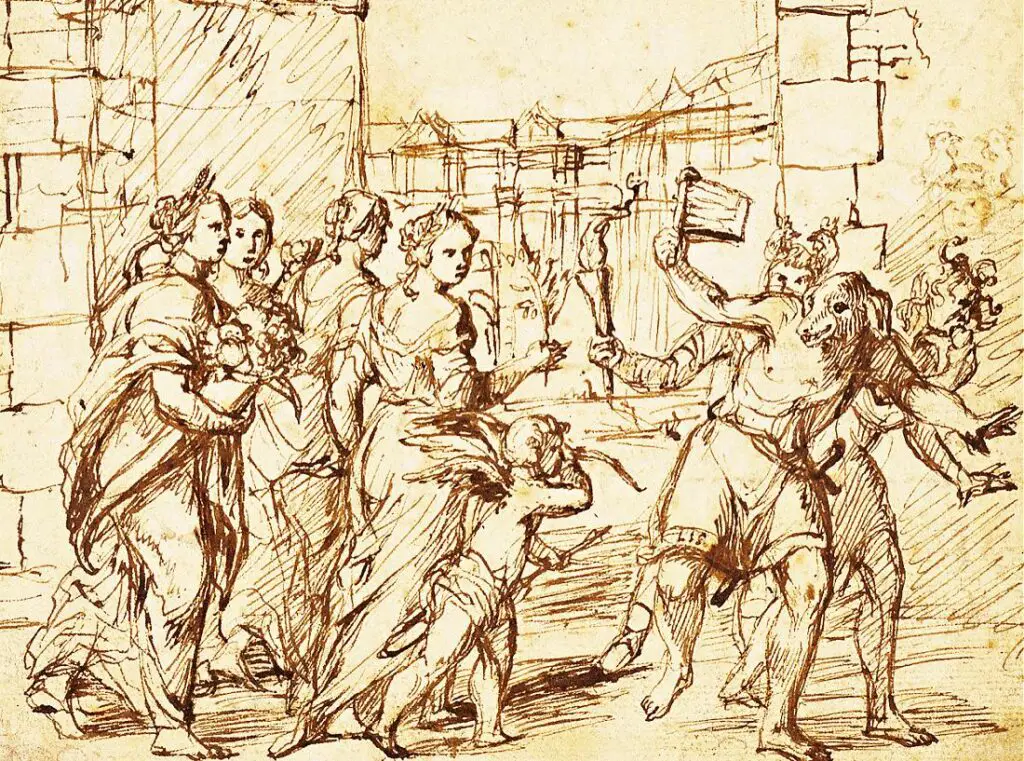
In February, the ancient Romans held the Lupercalia festival. It is derived from the story of Romulus and Remus the founders of Rome. When they were infants their father ordered them to be executed because of their mother’s infidelity. A servant took pity on them and placed them in a basket and floated it on the Tiber river. The river god carried the basket until it became entangled on a fig tree. A she-wolf took the babies in and suckled them. A shepherd found them later and adopted them. When the boys grew older they found the cave and called it Lupercal. This den was where Rome was later founded. The twins named the cave Lupercal to honor the god of fertility, Lupercus, and the she-wolf that nurtured them.
The festival began with a sacrifice of two male goats and a dog by priests called Luperci. The Luperci would then smear the blood from the knife onto their foreheads and laugh while they removed the blood with a piece of mild soaked wool. After the sacrifice, the priests would cut the flesh of the goats into strips and run naked in the street whipping women with the skin. If a woman was whipped, she became fertile. Some women would strip and welcome the whipping. Men and women would draw names out of a jar and would be sexual partners with whomever’s name they drew for a year.
Due to the time of this festival and the sexual nature, it is thought to be the precursor of Valentine’s Day.
Pagan Festivals
Imbolc Festival
Symbol of purification, rebirth.
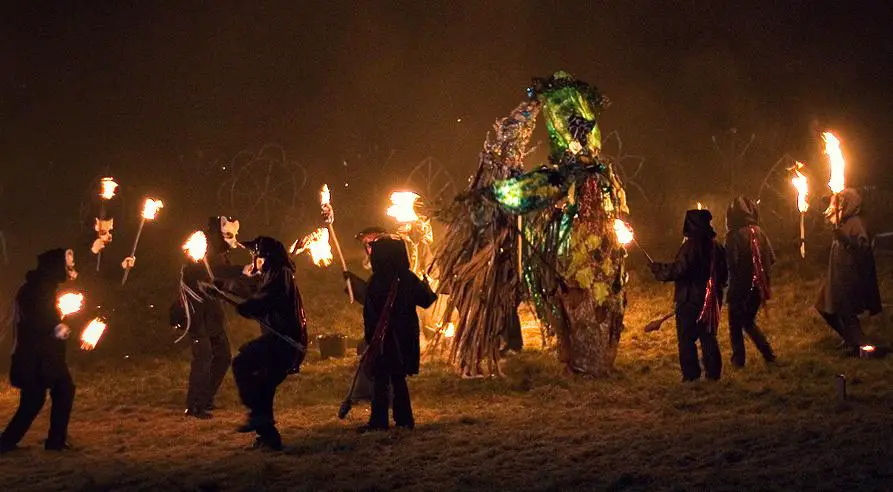
The pagans celebrate festivals from the Wheel of Life. The Imbolc festival is one of the first of the seasons. This festival takes place from February 1 to sundown on February 2. Around this time the ewe’s milk would come in. The mild was used in the festival to symbolize purification and rebirth. The festival was in honour of the goddess Brigid. Brigid was the goddess of fertility, poetry, prophecy, and crafts. She was the daughter of one of the oldest gods, Dagda. The festival began by assembling an effigy to Brigid out of rushes and oats. The effigy was dressed in a dress and put in a basket. On the second day, there were bonfires and lamps lit in tribute to Brigid. People would carry their effigies from house to house along with straw boys and visit wells and other revered locations.
Beltane Festival
Symbol of sun, fertility, protection.
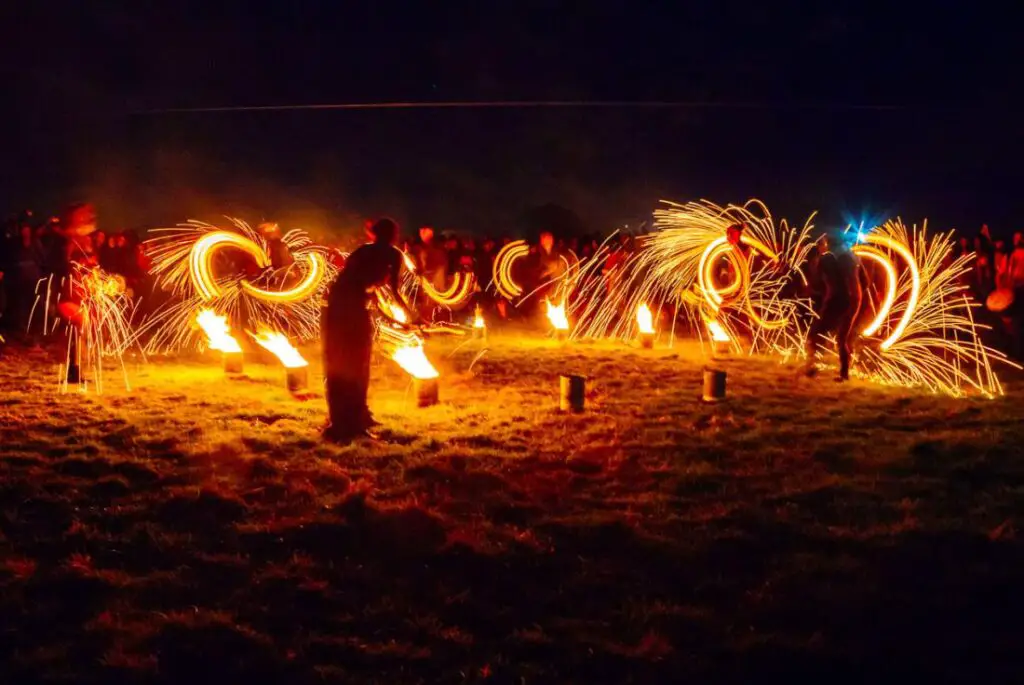
The Beltane festival takes place around May 1. Beltane marked the start of summer when herds were driven to their summer fields. This festival was centered around herdsmen as opposed to farmers. The Beltane festival was in honor of the god Belenus, the sun god, and to appease the fairies and spirits. During the festival, lamb sacrifices were made to Belenus, and bonfires were lit. Two bonfires were lit in every district. The cattle were driven around the bonfires to protect them from disease. People would then take the ashes from the bonfires and sprinkle them on their fields to encourage growth and good crops.
In the 19th century, Beltane was celebrated with force-fires in Scotland. A force-fire was a fire that was created by friction and was believed to keep away infectious diseases and plague among the cattle. The fires and bonfires symbolized the sun and trying to burn away any bad influences. Instead of sacrificing a lamb, the lamb was cooked and eaten at Beltane. Oatmeal cakes were made and given to the spirits for their protection. Yellow flowers, thought to invoke fire, were used to decorate doors and cows. A May Bush was created using a small tree branch. The bush was decorated with flowers, painted shells, and ribbons. The bush was sometimes paraded through the town and was sometimes planted. At the end of the festival, the May Bush was burned in a bonfire while people danced. In modern times, the Beltane festival still survives with the addition of plays and songs depicting the Green Man and the May Queen.
Lughnasadh Festival
Symbol of fertility, faithfulness, peace, health, and prosperity.
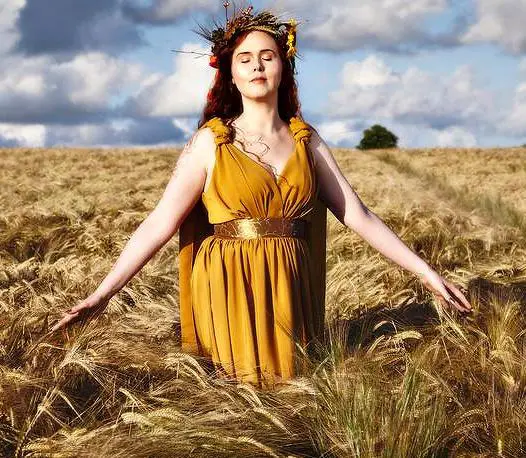
The Lughnasadh festival was held on August first to celebrate the end of summer and the beginning of autumn. It is held halfway between the summer solstice and autumn equinox. The festival was named after Lugh Lamhfhada, a sun god, who was named after the month of August. He was the leader of the fairies and was a high king in Ireland. Lugh’s mother died after clearing the lands of Ireland for farming. Lugh held a funeral service and sporting events in her honor. There were athletic contests, music, horse racing, storytelling, matchmaking, and drawing up contracts. Every year the festival brought the Irish Kings together so they could have discussions and settle disputes. This festival dates back to the Neolithic period.
The Lughnasadh festival was opened with the first harvest of the corn crops. The corn was used as an offering to the gods. A bull was sacrificed. a play was acted out, and people took part in competitions. The theme of the play was a struggle between the gods Lugh and Crom Dubh, a wicked god. Crom Dubh wants to hoard all the crops for himself, while Lugh wants to distribute the crops to mankind. The play might also talk about the struggle between Lugh and Balor, evil spirits who create a drought that is a representation of the summer heat. There were also athletic competitions including high jumping, swimming, boxing, running, wrestling, horse racing, and spear throwing. Bonfires were lit to honor the sun god and to hope for blessings of good weather. The festival was also a time when people made bargains and deals. In Ireland, a couple could have their hands bound with a knot and participate in a trial marriage that lasted a year and a day. These marriage contracts were generally declared during the Lughnasadh festival. Farmers would make trade agreements and rival clans would come together to discuss business. People would visit holy wells, decorate them with flowers, and leave gifts for the gods to have good health and wellness. In modern times the Lughnasadh festival is still honored with garlands, walking trips, and many fairs and festivals taking place in August.
Samhain Festival
Symbol of excess, peace, gluttony, harvest, and spirits.
The Samhain festival begins on October 31 and lasts through November 1. This festival ushers in the dark time of the year and welcomes the harvest. The barriers between the spiritual and physical world disintegrate during Samhain. This allows people to interact with the spiritual world. The Samhain festival is the most significant one. This festival took place at the midpoint between the fall equinox and winter solstice. The festival started with the harvesting of the crops. The people would bring the harvested crops to the Druid priests. Everyone would join together to create a community fire using a fire wheel. The wheel symbolized the sun and the lighting of the fire included prayers to the sun god.
During the Samhain festival, cattle were sacrificed. This was the time of year when herds were driven back from the summer fields. The sacrifice was given in hopes that the gods would watch over the cattle. In the early days of Samhain, a family would sacrifice ⅔ of its corn, milk, and children to the Formorians who were evil creatures that would cause destruction and blight on a community if sacrifices were not made.
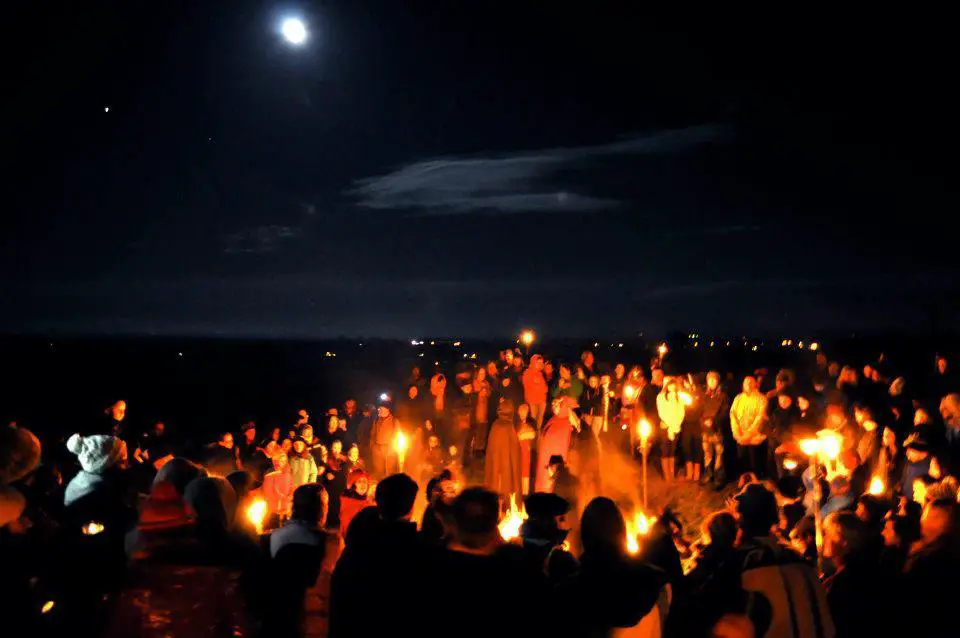
Samhain was a festival for the dead. Ancient tombs in Ireland were constructed so that the sun would rise through them during the Samhain festival. People believed that the spirits walked the earth during Samhain. Sacrifices and food were left out for the gods and the fairies so that they would not take people into the Otherworld. Some of the creatures that could take people were the Pukah which was a shapeshifter who grabbed people, headless horsemen who would foretell a person’s death, and the Faery Host who hunted people to take back to the Otherworld. The people in the town would dress as monsters and animals during the festival so the spirits would not recognize them as human.
During the Samhain festival, the commanders of forces were given holiday thrones and weapons were barred from the festival. Noblemen from around the country would gather to make new laws and renew current laws. They also feasted. Gluttonous feasts and mead beer were consumed to excess during the Samhain festival.
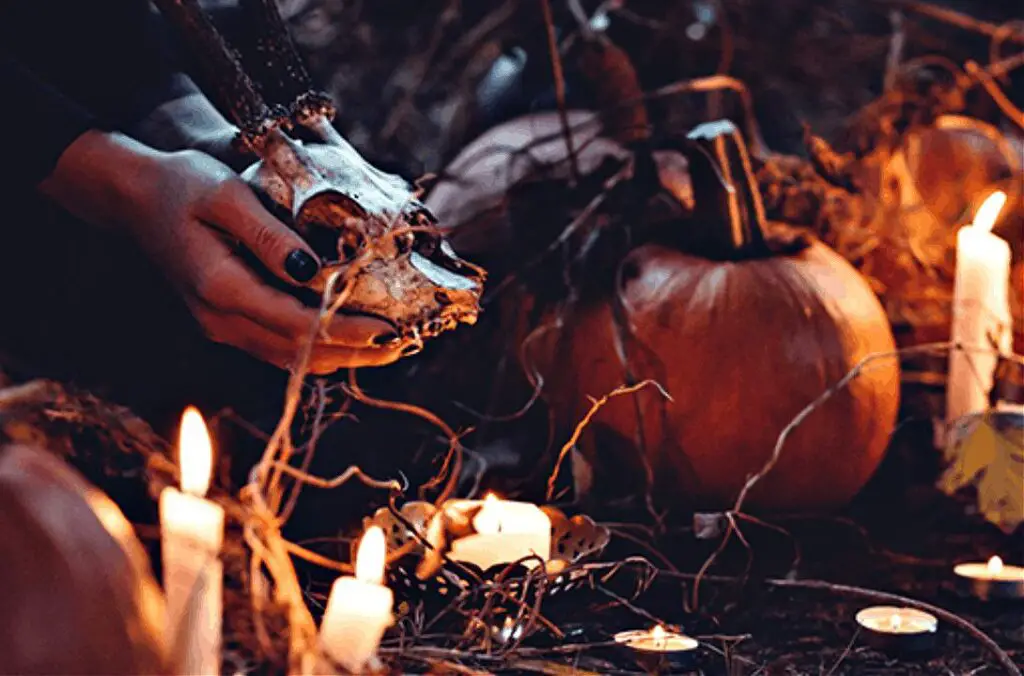
The sacrifices and some of the crops were thrown into the fire as a gift to the gods. At the end of the festival, all the fires in the houses were doused and then relit using the fire from the bonfire. In early times the Samhain festival would last for a week, but in more modern times it lasts for a complete day. Halloween was believed to come from the Samhain festival.
Chinese Festivals
Chinese New Year
Symbol of protection, good luck
The Chinese New Year festival occurs on the second full moon after the winter solstice. The first Chinese New Year festival occurred over 3,000 years ago. Nian, a mythical beast would eat people and crops on the first day of the new year. A farmer figured out that putting food outside the houses, hanging red lanterns, and lighting crackling bamboo would scare Nian away. This is the origin of the first Chinese New Year. In the beginning, sacrifices were made to appease the gods and ask them for a good year. Later, people began to stay up late, clean their houses, and eat dumplings to celebrate the Chinese New Year.
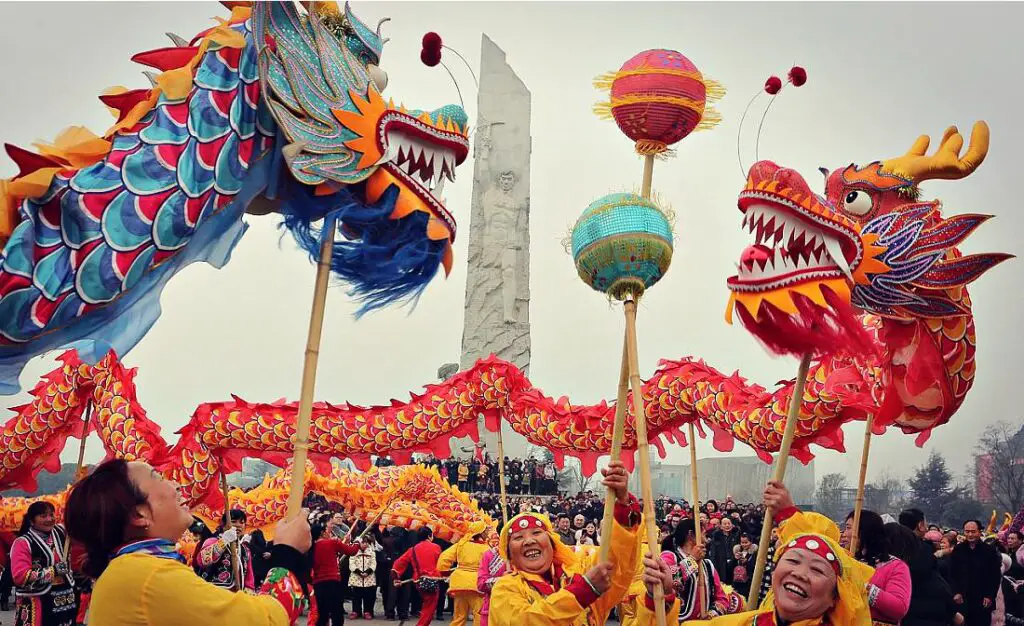
In modern times, people celebrate by giving red gifts and hanging red lanterns. Fireworks are set off to chase away evil spirits and families come together for the reunion dinner, the most important dinner of the year where they eat rice cakes, fish, and dumplings for good luck. Lion dance troops are invited to perform to help chase away evil spirits and bring good luck. The Chinese New Year Festival lasts fifteen days with different celebrations and superstitions happening across that time. On the last day, candles are lit to guide any remaining spirits home.
Lantern Festival
Symbol of good health, good weather, luck, happiness, harmony
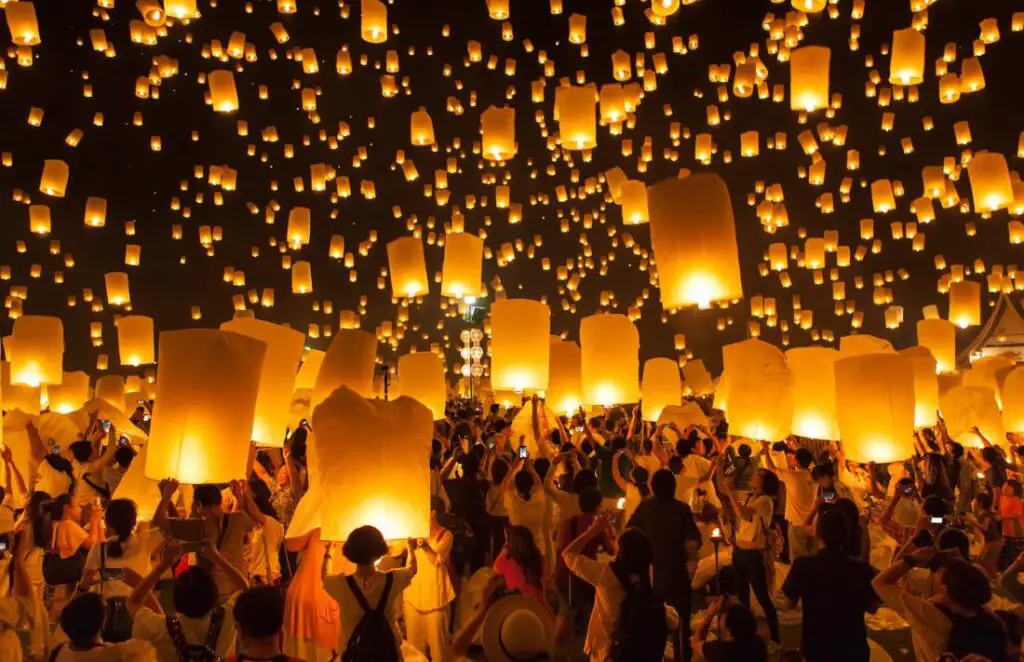
The Lantern festival is held on the fifteenth day of the Chinese New Year festival, or the fifteenth day of the first lunar month. When the Lantern festival first began, only the emperors and noblemen would carry lanterns in the street. They were asking Tayji, the God of Heaven, to bring good health and weather to their people. Emperor Ming told all the people to light lanterns and candles after he witnessed Buddhist monks lighting them on that day. They were celebrating the declining darkness of winter. People would chaperone their daughters while walking with the lanterns in hopes of finding love. Tangyuan is eaten during the Lantern festival to bring luck, happiness, and harmony in the new year. The dragon dance, lion dance, walking on stilts, and solving riddles are a part of the lantern festival. Children look at the lanterns in which a riddle has been placed and try to solve them. If they answer correctly they receive a small prize from the person who wrote the riddle.
Moon Festival
Symbol of harmony, unity, fertility.
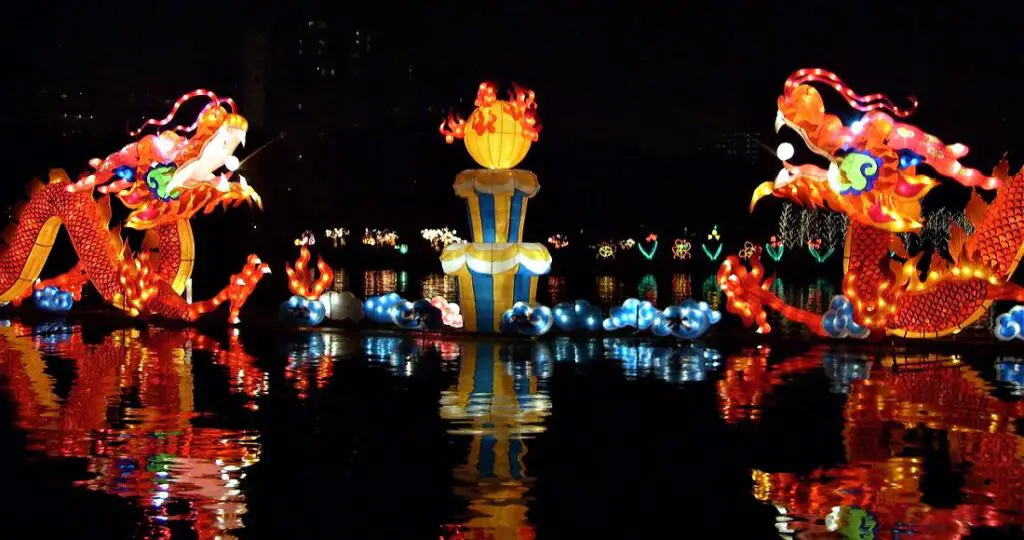
The second most important Chinese festival is the Moon festival. It is held around mid-September to early October. The Baiyue people used this festival to commemorate the dragon that was responsible for bringing rain for their crops. There is a family gathering on this day. People make offerings to the Moon goddess, Chang’e. In mythology, Chang’e was married to an excellent archer named Hou Yi. Hou Yi was sent an elixir of immortality by one of the immortals. He did not want to leave his wife, so he let her hold on to the elixir. One of Hou Yi’s pages demanded the elixir from Chang’e when Hou Yi was out hunting. Chang’e refused and swallowed the elixir herself. She needed a place to live and she did not want to be far from Hou Yi, so Chang’e chose to live on the moon. When Hou Yi came home and heard what happened he set up incense and offered food in his yard so Chang’e would have something to eat. This was the start of the Moon festival. The festival coincided with the rice and wheat harvest. There were offerings made from the harvest for the moon goddess. The moon symbolizes harmony and unity and even in modern times people will gather with their families and watch the moon while eating moon cakes. Lion dances are a part of this festival. Lanterns, a symbol of fertility, were lit that night and people wandered around carrying them. This is the time of year when girls are courting and looking for love. There are differing courtship rituals for every region. There are dances and meeting places arranged for girls to find their partners.
